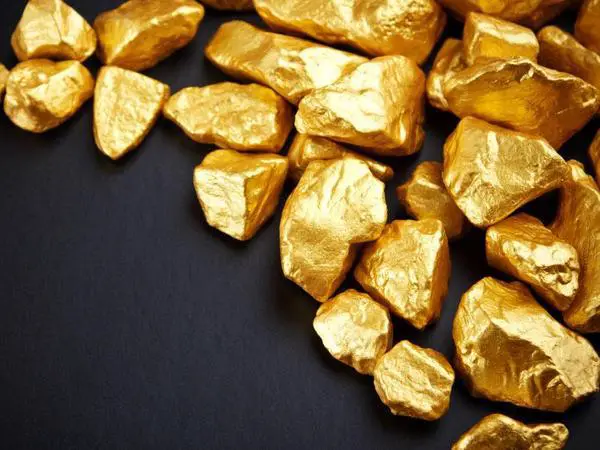The Reserve Bank of Australia (RBA) decided to lower the cash rate by 25 basis points again this Tuesday after announcing interest rate cut in May. After rolling out small stimulus packages including a bigger ETF buying program last week, the Japanese cabinet approved an economic stimulus package worth 28.1 trillion yen, aiming to boost the Japanese economy in next two years.
In addition, market participants believe that more easing policies might be launched in August. The market expects that the Bank of England (BoE) might announce interest rate cut this Thursday, while it is highly possible for the New Zealand to cut interest rates next week.
As easing policies launched globally, precious metals asset with gold included see more investment opportunities. Several market participants indicate that the strength of gold might continue in the second half and investors can choose appropriate investment opportunity.
Global macro environment boosts gold price
Gold price experienced a pullback in the past July after surging since early June. Gold price declined to 1,310.56 U.S. dollars per ounce at the lowest after recording 1,374.91 U.S. dollars per ounce on July 6. However, since the Federal Reserve (Fed) leaves interest rates unchanged in July meeting, gold price starts to surge again. By the time the journalist publishing the article, boosted by Japan’s easing policy and the RBA’s interest rate cut, gold price has surged to 1,365.46 U.S. dollars per ounce, approaching the two-year high 1,374.91 U.S. dollars per ounce.
“In general, precious metals like gold will see favorable global macro environment in the second half”, as indicated by Tang Xiangbin, an analyst with the financial market department of China Minsheng Bank. According to Tang’s analysis, uncertainties brought by the UK’s Brexit vote have grown into an important force supporting gold price. For example, results of a latest pressure test carried out by European Banking Authority (EBA) in 2016 show that though the overall anti-risk capacity of European banks in extreme environment has been improved, the test results of some large-scale banks in Italy and Germany are not so satisfying. It ignites market participants’ concern about European banking industry and boosts certain risk aversion sentiment in the market.
In addition, since the Fed leaves interest rates unchanged in July meeting, the market lowers its expectation for interest rates hike in September. In Tang’s opinion, various economic data announced by the U.S. recently suggests that no conclusion can be drawn that the US economy sees constant recovery. Dragged by this, the US dollar index also declines recently. In the morning session of Wednesday in Asian market, the exchange rate of the U.S. dollar against a basket of currencies hovered around the six-week low.
Tang believed that the continuous influence of Brexit vote, the demand for risk aversion resulted from concerns about banking industry and other fields in Europe, and easing policy of central banks worldwide would shore up gold price in the future.
Invest in precious metal asset at proper time
In terms of large category of asset allocation, the whole year of 2016 might be a good timing for investment in gold. In addition, as gold naturally boasts function of offsetting currency devaluation, the hedging value of gold will show up when the quantitative easing policy may be introduced again across the world.
In the opinion of Tang, international gold price will be highlighted by rebound in the second half of this year. But Tang also stressed that the growth of gold price is likely to be narrowed in the second half as it surged significantly in the first half. “Gold price hiked by about 25 percent in the first half. But based on historical data over past 40 years, it rises by 40 percent at most in a year; therefore, the drastic price hike in the first half may overdraw the price in the second half.” Tang predicted that the gold price is expected to jump to be above 1,400 U.S. dollars per ounce at most in the second half, but it is unlikely to be beyond 1,450 U.S. dollars per ounce.
In view of asset price, worse-than-expected economic data of the U.S. will impose pressure on risk asset temporarily, according to Xie Yi, executive investment director of First Seafrom Fund Management Co., Ltd. But Xie thought that the U.S. economy might keep improving in the third quarter, so the US stocks will make new record high. As a result, gold price will weaken and it won’t experience the next round of growing trend until the U.S. economy reaches the peak of short-term recovery.
Xie estimated that the gold price will see a turning point in the fourth quarter. However, Xie reminded investors that “It doesn’t mean that it will show a tendency of decline in the third quarter. Any worse-than-expected economic data of the U.S. or currency stimulus of central banks of mainstream countries will restrict the decreasing potential of gold price. Therefore, gold price will most probably keep fluctuating. Regarding a longer term, it is a good opportunity to invest in gold at the moment, including real gold, gold ETF, stocks related to gold and silver and jewelry fund.”
(APD/XH FINANCE)
 简体中文
简体中文

